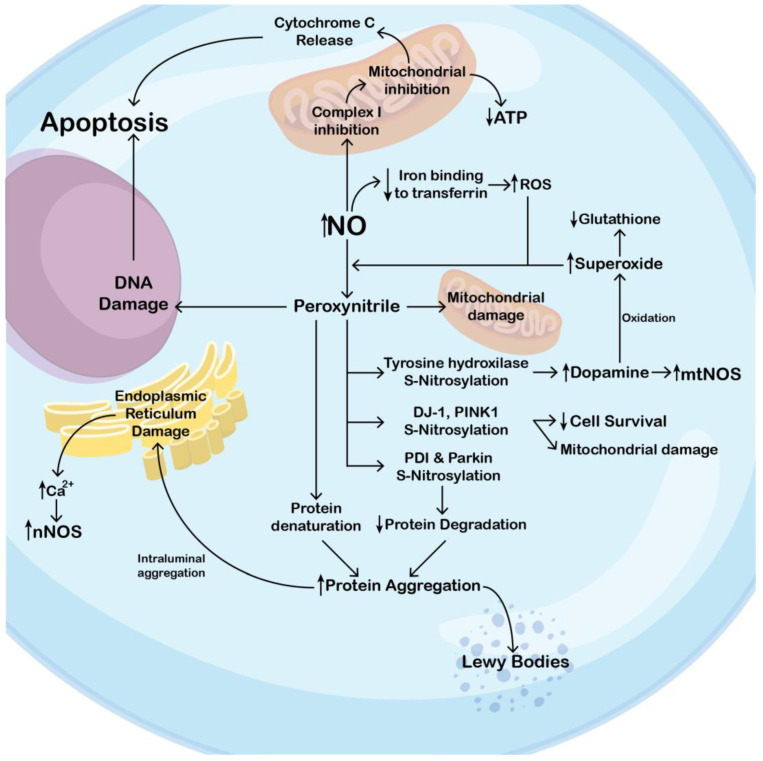Figure 3.
High concentrations of NO can negatively impact cellular function either directly or through peroxynitrile. Direct actions of NO include mitochondrial inhibition through complex I inhibition and release of bonded iron from transferrin. Mitochondrial inhibition through complex I inhibition results in lowered ATP production, which increases mitochondrial permeability, leading to cytochrome c release, thus activating apoptosis. Through the release of bonded iron from transferrin, NO increases the reactivity of iron ions, and subsequently, the formation of ROS. In combination with superoxide, NO forms peroxynitrile, a toxic compound with many deleterious effects. Peroxynitrile irreversibly damages mitochondria, damages DNA and induces apoptosis, and S-Nitrosylate key cellular proteins. S-Nitrosylation of tyrosine hydroxylase leads to an increase in its function and therefore increased dopamine synthesis. As a result of increased dopamine levels, mtNOS activation will lead to the formation of extra NO, and the excess of dopamine metabolism will increase superoxide concentrations and decrease glutathione levels, leading to the formation of more peroxynitrile. S-Nitrosylation of other proteins, such as DJ-1 and PINK1, whose main roles revolve around mitochondrial integrity and cell survival, could impair these exact roles, damaging mitochondria and promoting cellular death. Another two proteins, PDI and Parkin, which are involved in protein degradation, could lose their function due to S-Nitrosylation, increasing intracellular protein accumulation, and formation of Lewy bodies. Protein aggregation inside the endoplasmic reticulum will lead to ER stress, impaired function, and release of Ca2+, activating nNOS, increasing NO levels. Abbreviations: ATP, adenosine triphosphate; DNA, deoxyribonucleic acid; ER, endoplasmic reticulum; mtNOS, mitochondrial nitric oxide synthase; nNOS, neuronal nitric oxide synthase; NO, nitric oxide; PDI, protein disulfide isomerase; PINK1, PTEN-induced kinase 1; ROS, reactive oxygen species; ↑ increase; ↓ decrease. References: [7,9,11,13,14,15,44,67,69,70,74,75,82,83].

